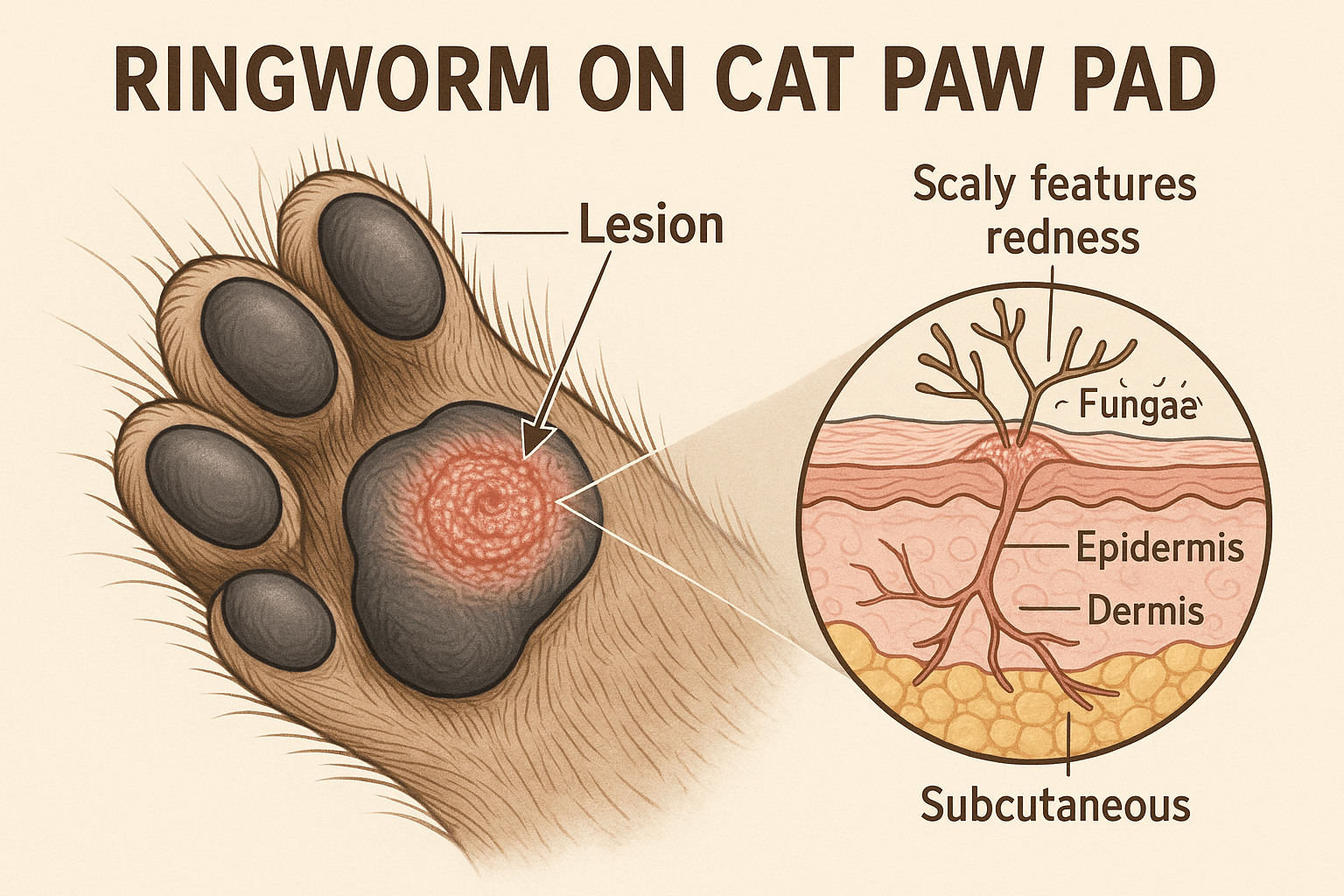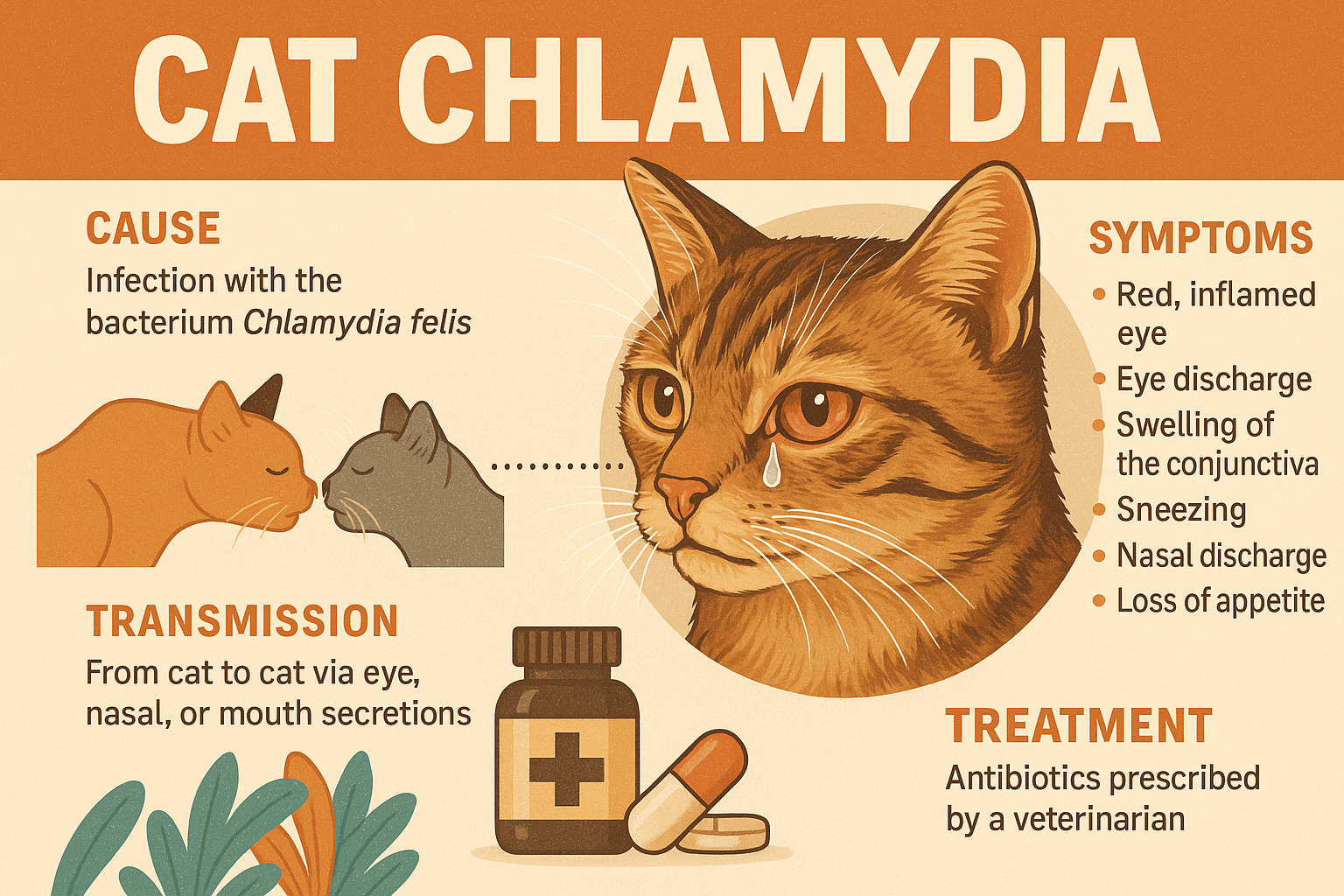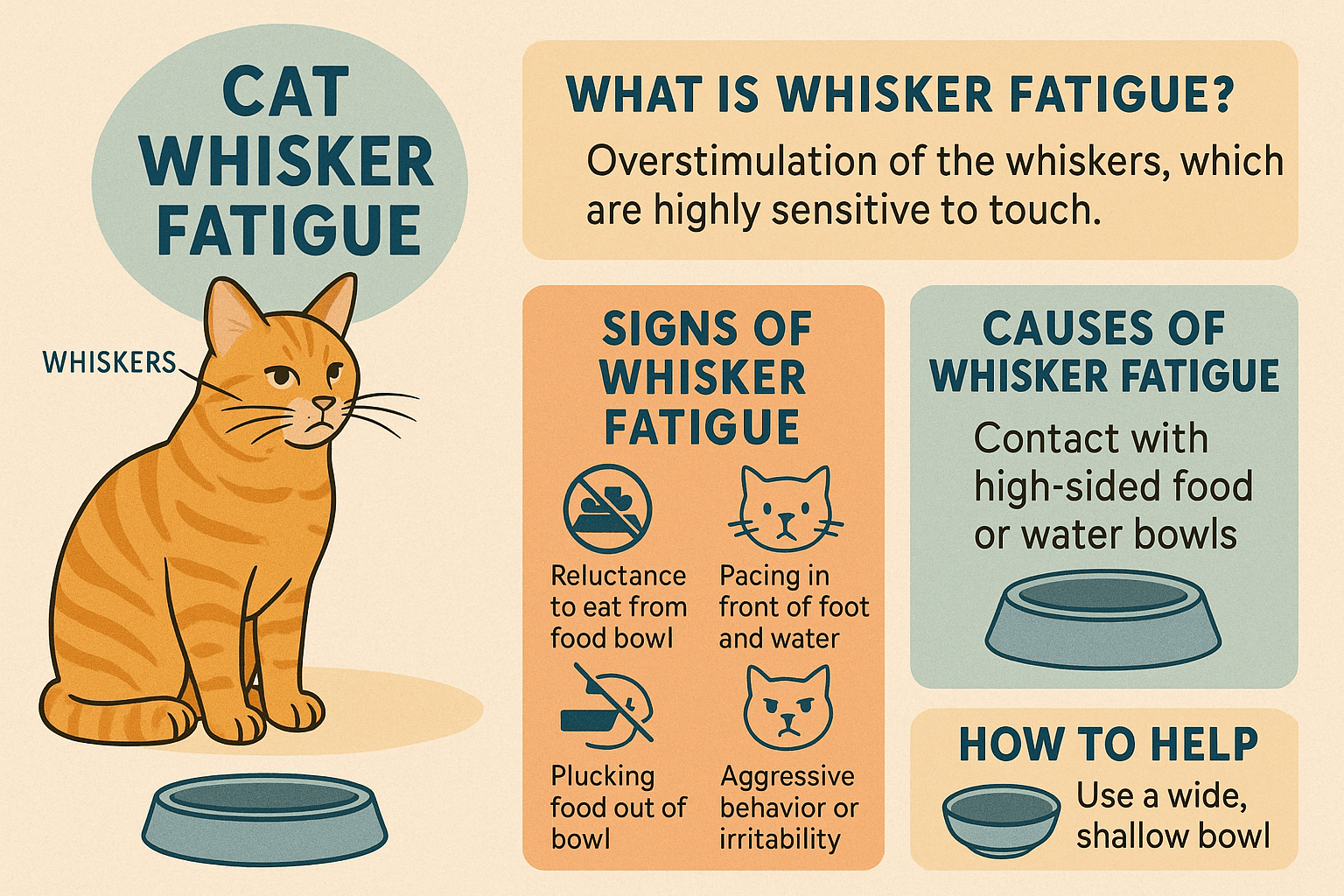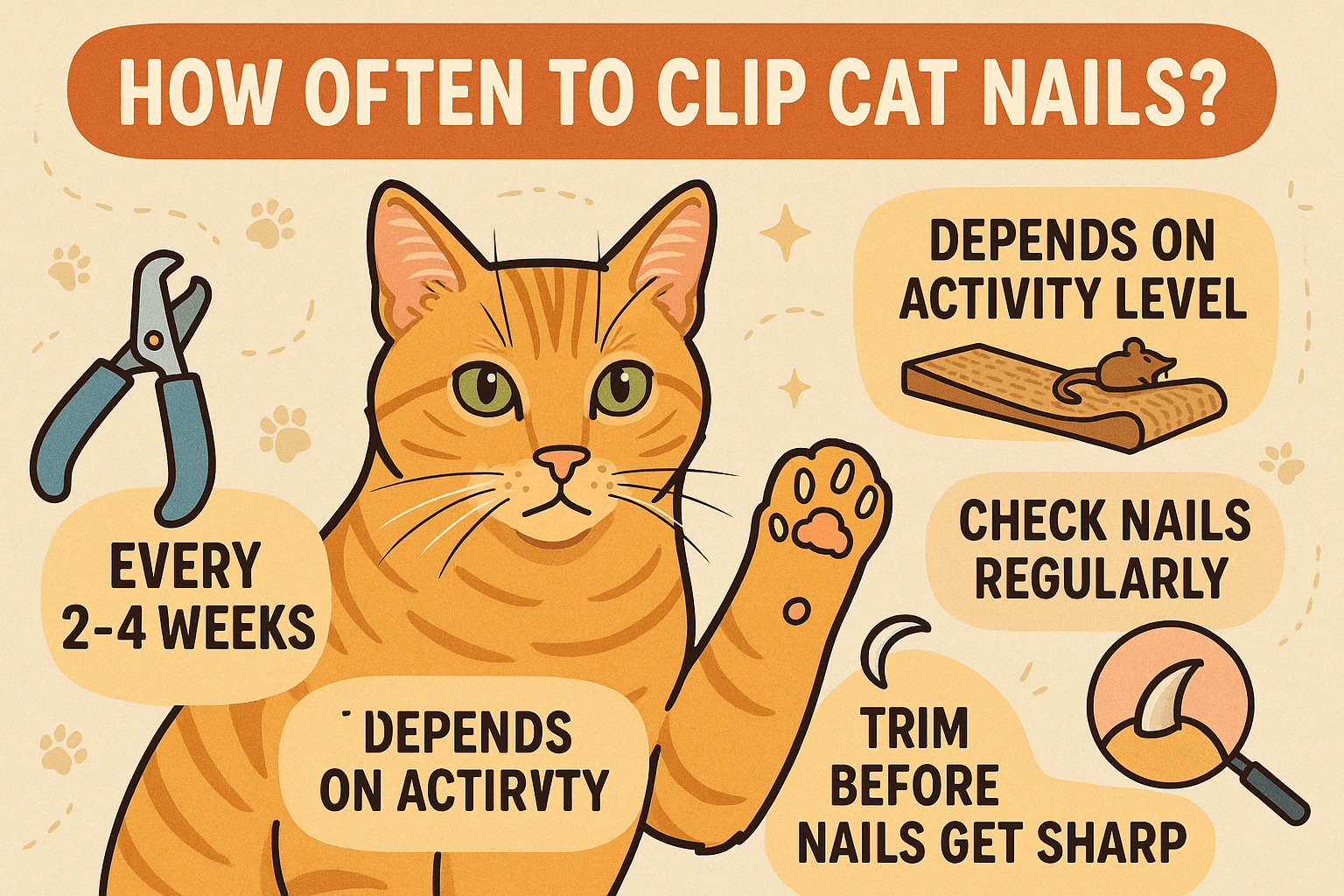Ringworm on Cat Paw Pad: What You Need to Know
Ringworm, despite its misleading name, is not caused by a worm but rather by a fungal infection that can affect cats’ skin, including their paw pads. While it’s more commonly seen on other parts of a cat’s body, ringworm on the paw pad can be particularly concerning for pet owners due to its location and potential discomfort for the cat. Understanding the signs, causes, and treatment options for this condition is crucial to ensure your feline friend receives proper care. In this blog post, we’ll explore everything you need to know about ringworm on cat paw pads, from prevention to management, so you can keep your furry companion happy and healthy.
Signs and Symptoms of Ringworm on Cat Paw Pads
Identifying ringworm on your cat’s paw pad early can make a significant difference in treatment outcomes. Here are some common signs to watch for if you suspect your cat may have this fungal infection.
Circular, Scaly Patches:
Look for round, red, or crusty areas on the paw pad, which are classic signs of ringworm.Hair Loss Around the Paw:
If your cat has fur between their toes or around their paw, patchy hair loss may indicate a fungal infection.Itching and Licking:
Cats with ringworm often lick or chew at affected areas due to irritation, which can worsen the condition.Swollen or Cracked Paw Pads:
Infected paw pads may appear inflamed, cracked, or unusually dry compared to healthy ones.Behavioral Changes:
Discomfort from ringworm can lead to limping, reluctance to walk, or increased irritability in your cat.
If you notice any of these symptoms, it’s important to consult your veterinarian promptly for an accurate diagnosis and treatment plan.
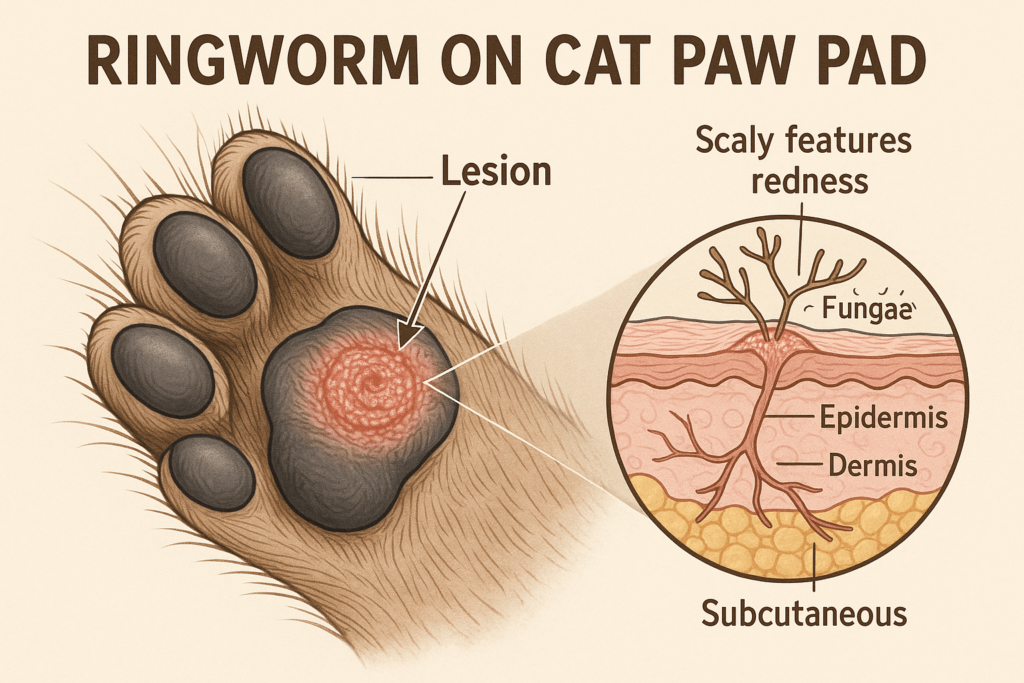
Causes of Ringworm on Cat Paw Pads
Understanding what causes ringworm on a cat’s paw pad can help prevent future infections and minimize risks. Several factors contribute to the development of this condition.
Direct Contact with Infected Animals:
Cats can contract ringworm through close contact with other infected animals, including dogs or stray cats.Exposure to Contaminated Objects:
Items like bedding, grooming tools, or toys shared with an infected animal can harbor fungal spores.Weakened Immune System:
Cats with weakened immune systems, such as kittens, seniors, or those with underlying health issues, are more susceptible to ringworm.Humid Environments:
Damp or humid conditions create ideal breeding grounds for fungi, increasing the risk of infection.Trauma or Skin Damage:
Existing cuts, scrapes, or abrasions on the paw pad can provide an entry point for fungal spores.
By addressing these causes, you can take proactive steps to reduce the likelihood of ringworm affecting your cat’s paw pads.
Check this guide 👉Cat Worms Identify: Best 7 Health Tips!
Check this guide 👉Tapeworms in Cat Vomit: Best 7 Expert Tips!
Check this guide 👉Roundworms in Cats: Best 7 Expert Tips!
Prevention Tips for Ringworm | Treatment Options for Ringworm |
|---|---|
Keep your cat’s environment clean | Topical antifungal creams or ointments |
Avoid contact with infected animals | Oral medications prescribed by a vet |
Regularly disinfect grooming tools | Medicated shampoos for bathing |
Provide a dry, well-ventilated space | Isolation to prevent spreading infection |
Schedule regular vet check-ups | Environmental decontamination |
How to Prevent Ringworm on Cat Paw Pads
Preventing ringworm starts with good hygiene practices and creating a safe environment for your cat. Here are some actionable tips to minimize the risk of infection.
Regular Grooming:
Brush your cat’s fur frequently to remove loose hairs and debris that could carry fungal spores.Clean Living Spaces:
Vacuum and disinfect your home regularly, especially areas where your cat spends most of their time.Limit Exposure to Strays:
Discourage interactions between your cat and stray animals that may carry ringworm.Monitor Your Cat’s Health:
Keep an eye on your cat’s skin and behavior, reporting any unusual changes to your vet immediately.Boost Their Immune System:
Provide a balanced diet and ensure your cat gets enough exercise to maintain overall health.
Taking these preventive measures can significantly lower the chances of ringworm affecting your cat’s paw pads.
Steps to Treat Ringworm on Cat Paw Pads
Treating ringworm requires patience and consistency, as it can take several weeks for the infection to fully resolve. Follow these steps to help your cat recover comfortably.
Consult Your Veterinarian:
A vet can confirm the diagnosis through tests like a Wood’s lamp examination or fungal culture.Administer Prescribed Medications:
Follow your vet’s instructions carefully when giving oral or topical treatments to combat the infection.Bathe Your Cat Regularly:
Use medicated shampoos designed to kill fungal spores while soothing irritated skin.Isolate Your Cat Temporarily:
Keep your cat away from other pets and family members until the infection clears to prevent spreading.Disinfect Your Home:
Clean all surfaces, bedding, and belongings your cat has come into contact with to eliminate lingering spores.
With proper care and attention, ringworm can be successfully treated, restoring your cat’s comfort and health.
Common Misconceptions About Ringworm
Misunderstandings about ringworm can lead to ineffective treatment or unnecessary worry. Let’s debunk some common myths surrounding this fungal infection.
Myth: Ringworm Only Affects Outdoor Cats:
Indoor cats are also at risk, especially if they come into contact with contaminated objects or visitors.Myth: Ringworm Always Looks Like a Perfect Circle:
Lesions can vary in shape and size, making professional diagnosis essential.Myth: Ringworm Heals on Its Own Without Treatment:
Untreated ringworm can persist and spread, requiring medical intervention for resolution.Myth: Ringworm Is Caused by Poor Hygiene:
Even clean environments can harbor fungal spores, so hygiene alone isn’t a guarantee against infection.Myth: Only Sick Cats Get Ringworm:
Healthy cats can contract ringworm, though weaker immune systems increase susceptibility.
Clearing up these misconceptions helps ensure accurate understanding and appropriate action when dealing with ringworm.
Environmental Cleaning Tips
A clean environment plays a vital role in preventing and managing ringworm. These cleaning tips can help eliminate fungal spores and protect your household.
Wash Bedding Frequently:
Use hot water and bleach (if safe for fabrics) to sanitize your cat’s bedding weekly.Disinfect Hard Surfaces:
Wipe down floors, walls, and furniture with a pet-safe disinfectant effective against fungi.Vacuum Carpets and Upholstery:
Vacuum thoroughly to remove loose hairs and spores, then steam clean if possible.Dispose of Contaminated Items:
If certain items cannot be disinfected, consider throwing them away to prevent re-exposure.Quarantine Affected Areas:
Restrict access to rooms or spaces used by infected pets until they are fully sanitized.
Thorough cleaning reduces the risk of reinfection and keeps your home safe for everyone.
Supporting Your Cat During Recovery
Recovery from ringworm involves more than just medication—it’s about providing holistic support to aid healing and comfort. Here’s how you can nurture your cat during this time.
Offer Nutritious Meals:
Feed high-quality food rich in vitamins and minerals to strengthen your cat’s immune system.Provide Gentle Comfort:
Offer soft blankets or cozy spots where your cat can rest without irritating their paws.Minimize Stress:
Maintain a calm environment to reduce anxiety, which can slow down recovery.Encourage Playtime Carefully:
Engage your cat in low-impact activities that don’t strain their paws or exacerbate symptoms.Celebrate Small Wins:
Acknowledge improvements in your cat’s condition to stay motivated throughout the treatment process.
With love and care, your cat will recover faster and feel supported every step of the way.
Frequently Asked Questions About Ringworm on Cat Paw Pads
Can humans catch ringworm from cats?
Yes, ringworm is zoonotic, meaning it can spread from cats to humans. Practice good hygiene to avoid infection.
How long does it take to cure ringworm?
Treatment typically lasts 6-8 weeks, depending on the severity of the infection.
Is ringworm painful for cats?
While not always painful, ringworm can cause itching, irritation, and discomfort, especially on sensitive areas like paw pads.
Can I use over-the-counter treatments?
It’s best to consult a vet before using any products, as improper treatment can worsen the condition.
Will my cat’s fur grow back after ringworm?
Yes, once the infection clears, fur usually regrows within a few months.
Ensuring Your Cat’s Recovery and Future Health
Ringworm on a cat’s paw pad may seem daunting, but with early detection, proper treatment, and preventive measures, it’s entirely manageable. By staying vigilant and working closely with your veterinarian, you can help your cat overcome this uncomfortable condition and prevent future outbreaks. Remember, a healthy cat is a happy cat—and with the right care, your feline companion will soon be back to their playful, energetic self.
Cat Chlamydia: Best 7 Expert Tips! Learn how to identify, treat, and prevent feline chlamydia with expert advice on symptoms, care, and long-term management for your cat’s health.
Savannah Cat Personality: Best 7 Expert Tips! Discover the unique traits, care needs, and expert advice for understanding and bonding with your energetic, intelligent Savannah cat.
Understanding Cat Whisker Fatigue: Best 7 Expert Tips! Discover causes, signs, and solutions for whisker fatigue to keep your cat comfortable and stress-free with expert advice.
How Often to Clip Cat Nails: Best 7 Expert Tips! Discover expert advice on trimming cat nails, maintaining paw health, and keeping your home scratch-free with simple, actionable tips.

